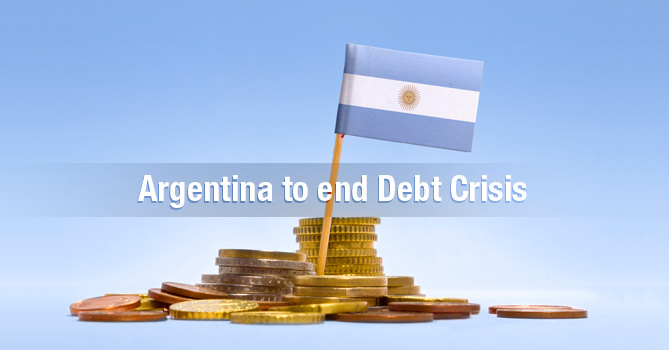A History of Economic Crises
Argentina, Latin America’s third largest economy, has seen spells of frustrating downturns and hope of economic revival going right back to the 1930s. The periods of slump and financial crises have, however, far outdone any patches of optimism. Political instability and frequent changes at the ministry level have led to wildly divergent policies to be implemented, ultimately leading to a debt woe that has made it impossible for the nation to borrow or fuel reforms and infrastructural development that could in turn stimulate growth.
The Great Depression of the 1930s saw government funds dry up to the extent that public workers had to go without salary. The coup that followed this depression paved the way for a highly unstable political structure that was governed alternatively by over a dozen generals and over 10 civilians through the rest of the century.
The 1950s again brought very disturbing economic times as inflation spiked to about 40 percent. President Juan Peron’s move to nationalise the railways and other assets caused investments to plunge. Successive coups and the nation’s inability to stick to either military or democratic governments led to severe economic instability.
The 1970s saw another disastrous spell of economic downturn with inflation soaring up to 600 percent. Foreign debt mounted and deep class divides fueled political unrest. Add to it the failed Falkland Island campaign and Argentine economy was almost in shambles by the early 1980s. The people of Argentina made a solid pitch for the return of democracy and yet economic stability eluded the nation. At times, inflation figures reached about 5000 percent, failure to collect taxes caused government coffers to dry up.
Free-market reforms implemented by the Menem administration through the early 1990s pulled the brakes on the soaring inflation figures and successfully tamed them. Foreign investments stepped up initially but soon the rampant corruption and red tapism led to the withdrawal of investments from Asia. The turn of the century saw the economy sink further. Unemployment rose to over 20 percent, poverty held most of the Argentinians firmly in its grip. An unprecedented phase of political and economic turmoil followed by widespread protests left the country’s economy at a fifth of its original value in 2001. Argentina committed the world’s largest sovereign default and failed to pay USD 1000 billion to its debtors.
Argentina’s National Debt and Restructuring Plans
By the end of 2002, the economy of Argentina seemed to stabilize again. Most of the crops produced in the country (such as soy) were highly in demand. The dip in domestic currency came with rising exports and Argentina’s agricultural sector was supported by equitable weather conditions and bumper crop. By the following year, the country recorded a growth of about 9 percent banking largely on the rise in global price of its key food exports. By 2005, Argentina’s GDP had risen appreciably and the country started to consider repayment of national debts.
A Long Legal Battle
A major focus shifted to the sovereign bonds on which the country had defaulted in 2001. In 2005, the Argentine government proposed a debt restructuring plan that would allow it to resume payments. While some of the country’s creditors accepted the plan, there were a few that held out. A second round of debt restructuring in 2010 managed to bring about 93 percent of the country’s bonds out of default. While it did bring the Argentine economy out in the clear (largely), it must be admitted that creditors lost almost 65 percent of face value of their holdings. The creditors (bondholders) that held out and declined both the 2005 and 2010 debt restructuring plans went into a long litigation against Argentina in the US federal court. These bond holders (often referred to as vulture funds) won the long drawn case and in 2013 the courts awarded them the full terms of their bond contracts. Far from ending the stalemate, the Argentine government led by Cristina Kirchner, however, refused to comply and pay up thus leading to another default in 2014.
A Possible Solution
On February 4, 2016, the Argentine government led by President Mauricio Macri came up with a possible solution that may end the long impasse between the nation and its American hold out creditors. If fully accepted by six of the bondholders who have been mired in a legal battle with the country for almost a decade and half, Argentina shall be making a major move towards resolving the country’s crumbling reputation in the financial markets. These six creditors were those who refused to accept the nation’s proposals for debt restructuring in 2005 and again in 2010, but later sued the country, winning a judgement in 2012 at a US federal court. Argentine authorities offered to pay up USD 6.5 billion in cash to the American creditors for the bonds held by them. This translates into a discount or “haircut” of about 25 percent for the creditors who had sued the country for a total of about USD 99 billion. According to the US court appointed mediator, two of the six bondholders have already accepted the proposal and the rest are yet to respond. While the proposal has been critiqued by some political parties back home in Argentina, in the global economic scenario, many are hailing the move as a possible “historic breakthrough” – one that shall put Argentina firmly on the path of financial redemption.
The Path Ahead
President Mauricio Macri, who took office in December 2015, seems determined to reach a breakthrough with the holdout creditors and end the 14-year-long legal battle that has left Argentina unable to secure any other foreign investments. If this deal is reached and the creditors accept the “haircut” terms, Argentina is not likely to lose any time in returning to the financial markets and seek global finances to fund some very necessary infrastructural development in the country. As of now, Montreux Equity Partners and Dart Management are the two bondholders who have accepted the terms of Argentina’s proposal and all eyes are set on the four remaining creditors, including Elliott Management and Aurelius Capital Management. The acceptance of this deal by the creditors is likely to herald a return of investor confidence in Argentina’s economic growth.
Read More:
- Best Cities in the World to Launch Startups
- Where is the Chinese Economy Headed?
- India-Africa hydrocarbon summit: Strengthening ties
- Why is Norway the Best Place to Live In?
- Oil Prices and the Global Economy
- Self-made Young Entrepreneurs of the Decade
- Is the World Economy in Trouble?
- Rich People Around the World
- $6.5 billion Cash Deal: Argentina’s Answer to Debt Battle
- Money Around the World

